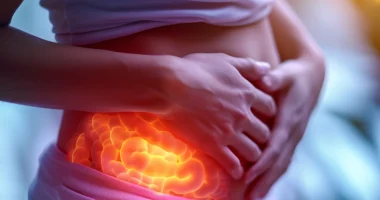Encephalitis
Definition
Encephalitis is an inflammation of the brain. A distinction is made between primary (tick-borne, Japanese mosquito) and secondary (measles, influenza, postvaccinal) encephalitis. In the case of encephalitis of any etiology, complex therapy is necessary. As a rule, it includes etiotropic treatment (antiviral, antibacterial, anti-allergic), dehydration, infusion therapy, anti-inflammatory treatment, vascular and neuroprotective therapy, and symptomatic treatment. Patients who have undergone encephalitis also need rehabilitation treatment.
General information
The term “encephalitis” refers to infectious, allergic, infectious-allergic, and toxic lesions of the brain. This group of diseases is very numerous, and the epidemiologic data and pathogenetic features of encephalitis are equally diverse. Some have seasonal and geographical specificity, while others are widespread and do not depend on the time of year.
Classification
Classification of encephalitis reflects etiologic factors, associated clinical manifestations, and course features.
1. According to etiology and timing of onset are distinguished:
- Primary encephalitis (viral, microbial and rickettsial)
- secondary encephalitis (postvaccinal, bacterial and parasitic, demyelinating).
2. By type of development and course of the disease:
- extra acute;
- acute;
- subacute;
- chronic;
- recurrent.
3. By localization of the lesion:
- cortical;
- subcortical;
- stem;
- with cerebellar damage.
4. By prevalence:
- Leukoencephalitis (with white matter lesions);
- Polyencephalitis (with gray matter lesions);
- Panencephalitis.
5. By morphological features:
- necrotic;
- hemorrhagic.
6. According to the severity of the course of the disease, encephalitis is distinguished:
- mild;
- moderate;
- severe.
Primary encephalitis
Tick-borne encephalitis
The disease is caused by the tick-borne encephalitis virus. Ixode ticks are vectors of the virus and are a reservoir in nature. The virus enters the human body through a tick bite or alimentary (eating raw milk from infected cows and goats) and penetrates the nervous system hematogenously.
The clinical picture of all forms of tick-borne encephalitis is typified by an acute onset, manifested as an increase in body temperature to 39-40 degrees, breaking pain in the lower back and muscles. Already in the first days of the disease are marked by pronounced cerebral symptoms (vomiting, headache) and impaired consciousness; in some cases, there were mental disorders (delirium, auditory and auditory hallucinations, depression). There are several clinical forms of tick-borne encephalitis, their difference lies in the prevalence and severity of certain neurological symptoms:
- meningeal;
- encephalitic;
- fever;
- polyradiculoneuritic;
- meningoencephalitis.
In the diagnosis of tick-borne encephalitis, anamnesis data (stay in an endemic area, tick bite, patient’s profession, consumption of goat’s milk or cheese) are of great importance. Note that only 0.5-5.0% of all ticks are carriers of viruses, so not every disease after a tick bite is encephalitis. The “tick-borne encephalitis” diagnosis is verified using complement binding, neutralization, and hemagglutination inhibition reactions.
Japanese mosquito encephalitis.
The disease is caused by a neurotropic virus carried by mosquitoes capable of transovarial transmission. The incubation period lasts from 5 to 14 days. Japanese mosquito encephalitis debuts suddenly, with a sharp rise in body temperature (up to 39-40 degrees Celsius), vomiting, and intense headache. In addition, the clinical picture of Japanese mosquito encephalitis is typified by a significant expression of general infectious symptoms (tachycardia, bradycardia, facial hyperemia, herpetic rashes, dry tongue).
The course of the disease is usually severe. During the first 3-5 days, symptoms increase; high body temperature persists for 10-14 days and decreases lyrically. Lethal outcome is most often observed (up to 70% of cases) in the first week of the disease. Death may occur later in the disease as a result of complications (e.g., pulmonary edema). The seasonality of the disease and epidemiologic data are of great importance for diagnosing Japanese mosquito encephalitis. The diagnosis is verified using complement binding and neutralization reactions; antibodies are detected as early as the second week of the disease.
Secondary encephalitis
Influenza encephalitis
The disease is caused by influenza viruses A1, A2, A3 and B. It occurs as a complication of influenza. Pathogenetic mechanisms of influenza encephalitis are dyscirculatory phenomena in the brain and neurotoxicosis. Lesions of the nervous system are inevitable in any form of influenza when they manifest as headache, muscle pain, drowsiness, adynamia, etc. However, in the case of influenza encephalitis, the patient’s well-being deteriorates sharply, there are general cerebral symptoms (dizziness, vomiting). A moderate increase in protein and small pleocytosis are detected in the liquor (during lumbar puncture, liquor flows out under increased pressure).
Korean encephalitis
It refers to infectious-allergic encephalitis. It develops acutely in the 4-5 days after the appearance of measles rash, when body temperature, as a rule, has already normalized; note its new sharp rise to 39-40 degrees Celsius. In most cases, there are pronounced disorders of consciousness, hallucinations, psychomotor agitation, generalized seizures, coordination disorders, hyperkinesis, paresis of the limbs, and pelvic organ dysfunction. The study of the liquor determines increased protein content and pleocytosis. The course of measles encephalitis is exceptionally severe; lethality reaches 25%.
Treatment for encephalitis
Pathogenetic therapy
Pathogenetic therapy includes several areas:
- dehydration and control of cerebral edema;
- antihistamines;
- hormonal therapy – has a dehydrating, anti-inflammatory, desensitizing effect and protects the adrenal cortex from functional exhaustion;
- improving microcirculation;
- maintaining homeostasis and water-electrolyte;
- angioprotectors;
- anti-inflammatory drugs.
Etiotropic therapy
Etiotropic therapy of viral encephalitis involves using antiviral drugs that inhibit the virus’s multiplication. In severe cases, interferon alpha-2 is prescribed in combination with ribavirin. In RNA and DNA-viral encephalitis, tilorone is effective.
Symptomatic therapy
Symptomatic therapy involves several directions: anticonvulsant and antipyretic treatment, and therapy of delirious syndrome. Diazepam (5-10 mg intravenously on dextrose solution), 1% sodium thiopental solution intravenously, phenobarbital, primidone, and inhalation anesthesia are used for epileptic status. To reduce body temperature, lytic mixtures, 2 ml of 50% solution of metamizole sodium, droperidol, and ibuprofen are used. In the therapy of delirious syndrome, it is advisable to prescribe magnesium sulfate, acetazolamide, and lytic mixtures. Metabolic drugs and biostimulants are used to normalize consciousness, and antidepressants and tranquilizers are used to normalize the emotional state.
All these diagnostic and treatment options are available in more than 400 hospitals worldwide (https://doctor.global/results/diseases/encephalitis). For example, Lumbar puncture can be performed in 11 clinics across Israel for an approximate price of $295 (https://doctor.global/results/asia/israel/all-cities/all-specializations/procedures/lumbar-puncture).
Rehabilitation
Restorative therapy also includes several components: treatment of parkinsonism; stereotactic surgeries are indicated only when rigidity is increasing, and drug treatment is ineffective; treatment of hyperkinesis; treatment of epilepsy; treatment of paresis; treatment of neuroendocrine disorders.
Prognosis and prevention
Possible outcomes of the disease include recovery, vegetative state, and gross focal symptoms. Possible complications include cerebral edema, brain dislocation, cerebral coma, epileptic syndrome, and cystosis. Prophylactic measures that can prevent tick-borne and mosquito-borne encephalitis infection include prophylactic vaccination for people living and/or working in areas of possible infection. The standard vaccination against tick-borne encephalitis includes three vaccinations and gives permanent immunity for three years. Prevention of secondary encephalitis implies timely diagnosis and adequate therapy of infectious diseases.

